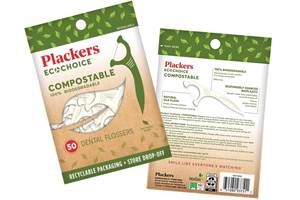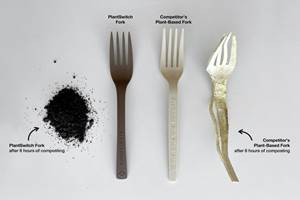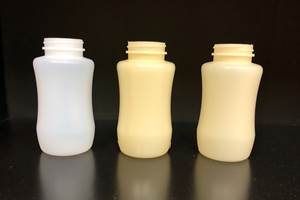Two Injection Molding Grades of Biobased Materials Enhance Sulapac’s Cosmetics Packaging Portfolio
Sulapac Luxe, ideal for replacing hard plastics such as ABS and its more flexible edition Luxe Flex open up new opportunities.
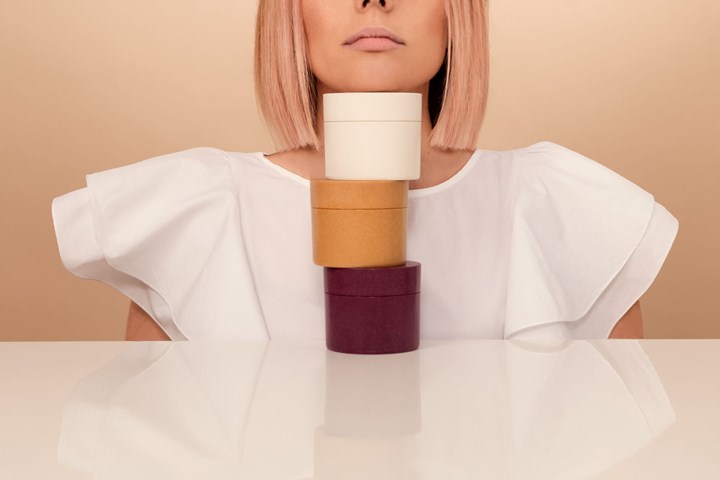
Finnish eco-startup company , that first came to our attention in 2019, has been making significant strides with its biobased, biodegradable products, particularly in the luxury cosmetics packaging arena, with leading brands such as Chanel, which was one of its first investors. Sulapac was founded by two female biochemists specializing in biomaterials--Suvi Haimi and Laura Tirkkonen-Rajasalo. Sulapac materials are made of responsibly sourced plant-based biopolymers and sustainable fillers like wood chips from industrial side-streams. The matrix resin varies between recipes and the recipe is always a unique combination of responsibly sourced biobased and biodegradable biopolymers and sustainable fillers. The biobased content in each recipe is maximized.
As noted by Haimi previously, “Sulapac’s 大象传媒 model is based on partnerships and factor in as a service concept, meaning we do not own any production facilities but partner with existing production plants. This 大象传媒 model enables localized manufacturing of the end-products, and as our 大象传媒 grows, also the material production can be taken close to the customer.”
Recently the company launched two new injection molding materials reportedly ideal for replacing hard plastics such as ABS and specifically developed for conventional plastics converting machinery. Sulapac Luxe, made of sustainably sourced biobased biodegradable biopolymers and wood flour, is said to be ideal for fragrance bottle caps, lids and cosmetic jars. “It’s the only material in our cosmetics portfolio with fine, non-visible wood,” notes Haimi.
A more flexible edition, Sulapac Luxe Flex, comes without the wood component. This is a more ductile material with exceptionally good flow properties, and is ideal not only for caps and lids but also for compact powder boxes and other complicated designs. Sulapac Luxe Flex has a flexural strain of 10%. Both Sulapac Luxe and Luxe Flex can be used to replace ABS. “They have many similar properties, yet the Sulapac materials leave no permanent microplastics or toxic load behind during the use phase or in the end of life,”says Haimi.
High density, resistance to temperature fluctuations, ceramic feel and sound, and a glossy, smooth surface are some of the material’s characteristics, which are important for luxury brands. Sulapac Luxe is not only recyclable, but as with all Sulapac materials, it can also be made with recycled content, another feature important for many premium brands. Said Haimi, “Sulapac is a pioneer in recycled bio-based materials and our aim is to use only recycled biopolymers within the next five years.” She noted that several high-end beauty brands have already shown interest in utilizing Sulapac Luxe in combination with their existing glass fragrance bottles or jars. The material is commercially available to all manufacturers and slips seamlessly into existing injection molding production lines.
“One major challenge beauty brands face in replacing conventional plastics is the strict performance criteria of the chosen materials,” said Sulapac’s international sales director Colin Strobant. “With Sulapac Luxe, we have shown that conventional plastics can be easily replaced without compromising on quality. We have listened to our customers’ challenges, and the material has been through an extensive development process to ensure it stands up to the highest demands for luxury performance.”
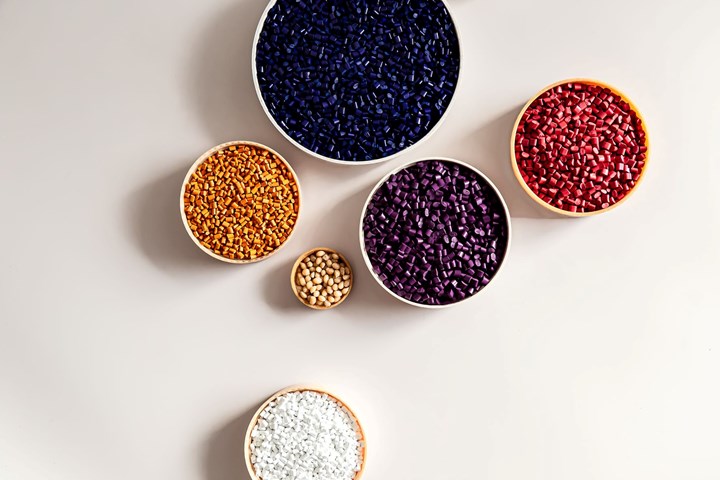
With the expanded portfolio, Sulapac’s customers can now create packaging for various product areas, including skincare, makeup, and fragrances. Shiseido’s brand Ulé utilizes Sulapac for their lids, while a diverse group of skincare brands from Lumene to Manik package their products in Sulapac jars. The selection of materials and production techniques allows brands to choose between a matt, glossy, or natural appearance complimented by a wide range of color options.
The successful launch of the BetterBarrel by Schwan Cosmetics last year, and Toly’s popular Infinity Line of powder compacts made with Sulapac further demonstrate the versatility of Sulapac’s offering. Sulapac has also developed premium quality solutions in collaboration with Chanel, including sustainable bottle caps created exclusively for the fragrance range Les Eaux DeChanel and the lid for the N° 1 de Chanel Cream.
Besides materials for injection molding and extrusion, Sulapac’s portfolio includes solutions for thermoforming, allowing cosmetic companies to create sustainable logistic trays and point-of-sale displays, as well as for 3D printing enabling sustainable prototyping.
For a comparison of all technical properties, you can find a .
Related Content
How to Optimize Injection Molding of PHA and PHA/PLA Blends
Here are processing guidelines aimed at both getting the PHA resin into the process without degrading it, and reducing residence time at melt temperatures.
Read MoreHow Yeast Could Give Rise to Bioplastic
Researchers work to scale up a biomanufacturing process for succinic acid, an important building block for industrial chemicals and a biopolymer precursor.
Read MoreAdvanced Biobased Materials Company PlantSwitch Gets Support for Commercialization
With participation from venture investment firm NexPoint Capital, PlantSwitch closes it $8M bridge financing round.
Read MoreHow to Extrusion Blow Mold PHA/PLA Blends
You need to pay attention to the inherent characteristics of biopolymers PHA/PLA materials when setting process parameters to realize better and more consistent outcomes.
Read MoreRead Next
Beyond Prototypes: 8 Ways the Plastics Industry Is Using 3D Printing
Plastics processors are finding applications for 3D printing around the plant and across the supply chain. Here are 8 examples to look for at NPE2024.
Read MorePeople 4.0 – How to Get Buy-In from Your Staff for Industry 4.0 Systems
Implementing a production monitoring system as the foundation of a ‘smart factory’ is about integrating people with new technology as much as it is about integrating machines and computers. Here are tips from a company that has gone through the process.
Read MoreSee Recyclers Close the Loop on Trade Show Production Scrap at NPE2024
A collaboration between show organizer PLASTICS, recycler CPR and size reduction experts WEIMA and Conair recovered and recycled all production scrap at NPE2024.
Read More









